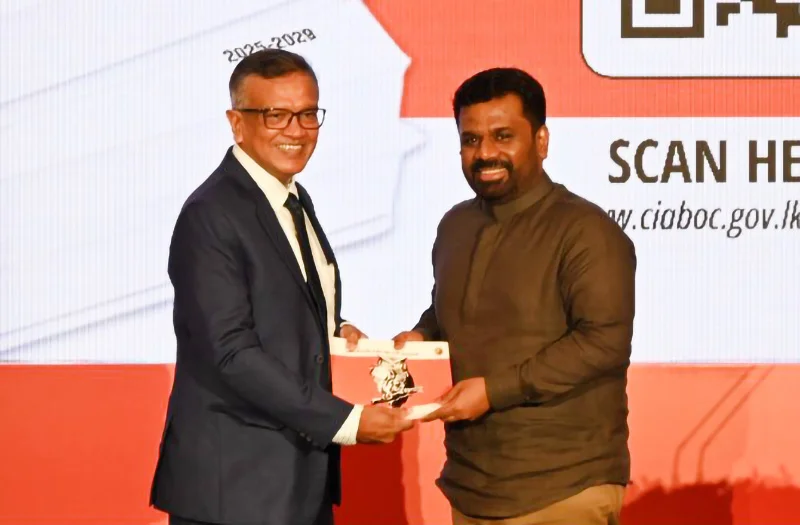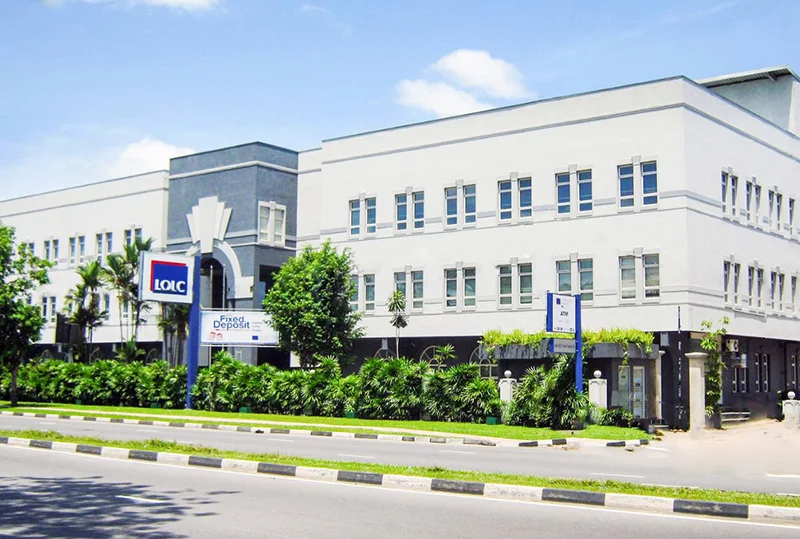Business
Sri Lanka identified as the largest recipient of ADB infrastructure support

By Sanath Nanayakkare
Sri Lanka, a founding member of the Asian Development Bank (ADB), has received cumulative loans and technical assistance totaling US$12.6 billion between 1966 and 2024, And the Bank identifies Sri Lanka as the largest recipient of ADB infrastructure support among developing countries.
Currently, the ADB’s active sovereign lending portfolio for Sri Lanka stands at 4 billion, with an indicative financing pipeline of $900 million estimated for 2025, pending government confirmation.
These funds have been instrumental in developing key sectors such as agriculture, natural resources, rural development, roads, water and urban infrastructure, public sector management, finance, education, health, transport, and energy including the most important policy-based budget support.
The ongoing $4 billion portfolio is being utilized across 27 projects, comprising 36 loans and 4 grants. The allocation includes:
Transport: $859 million
Energy: $869 million
Water and Urban Infrastructure: $393 million
Public Sector Management and Finance: $669 million
Education and Health: $823 million
Agriculture and Rural Development: $422 million
The proposed $900 million pipeline for 2025, subject to government approval, will target six sectors: macroeconomic stability, power, agriculture, finance, tourism, and skills development. Funding will be delivered through policy-based loans, results-based lending, investment projects, and technical assistance initiatives.
The ADB’s Country Partnership Strategy for 2024-2028 emphasizes strengthening public financial management, governance, domestic resource mobilization, and state-owned enterprise (SOE) reforms. Key areas include enhancing transparency, governance, competition policy, and climate change and disaster risk management.
Sectoral Allocation of Cumulative ADB Support (1966-2024)
Transport: 26%
Energy: 14%
Finance: 15%
Human Development: 13%
Agriculture: 12%
Urban Development: 11%
Public Sector: 6%
Industry and Trade: 2%
Multisector: 1%
ADB Country Director Takafumi Kadono and Country Operations Head Cholpon Mambetova announced these figures during a media briefing in Colombo on February 13, 2025. Kadono emphasized that ADB’s support was tailored to Sri Lanka’s needs, particularly during periods when access to capital markets or other lending institutions were minimal.
“We provide policy-based budget support to ensure structural and policy reforms are implemented, addressing underlying weaknesses and fostering sustainable, inclusive growth,” Kadono said. He added that ADB-funded projects undergo rigorous due diligence and are prioritized based on necessity, ensuring they address critical needs rather than being merely “nice to have.”
Mambetova highlighted Sri Lanka’s status as the largest recipient of ADB infrastructure support among developing countries, with 26% of the total loan portfolio allocated to the transport sector. She noted the ongoing construction of the elevated highway between the New Kelani Bridge and Galle Face in central Colombo, which will extend the expressway network into the city center and port. “This vital infrastructure project is nearing completion and will soon be inaugurated,” she said.
Discussions are underway with the Sri Lankan government to finalize the 2025-2028 project pipeline during the Country Programming Mission in March. The ADB will continue to support investment projects and provide technical assistance grants to strengthen government institutions, enhance capacity development, and conduct analytical research.
Sri Lanka’s partnership with the ADB remains a cornerstone of its development strategy, ensuring critical investments in infrastructure, governance, and sustainable growth.
ADB and the United Nations Development Programme (UNDP) in Sri Lanka have come together to support the Commission to Investigate Allegations of Bribery and Corruption (CIABOC) on select Anti-Corruption Initiatives in Sri Lanka.
“The response to people’s aspirations for better governance and rooting out corruption requires political will, strong partnerships, and unwavering commitment from all stakeholders working on Sri Lanka’s recovery and sustained development,” the two senior ADB representatives said.
Business
National Anti-Corruption Action Plan launched with focus on economic recovery

In a decisive move to stabilize Sri Lanka’s economy and rebuild investor confidence, the Commission to Investigate Allegations of Bribery and Corruption (CIABOC) yesterday launched the National Anti-Corruption Action Plan (NACAP) 2025–2029, with a clear focus on promoting transparency, accountability and economic governance.
Developed with the support of the United Nations Development Programme (UNDP) and funded by the government of Japan—contributing nearly USD 900,000—the initiative aims to address corruption as a critical economic barrier.
The launch, attended by President Anura Kumara Dissanayake, Chief Justice Murudu Fernando PC, and high-level diplomatic and institutional representatives, signals a shift in Sri Lanka’s economic reform narrative. The NACAP is seen not just as a governance tool but as an economic recovery strategy designed to attract foreign investment, improve public finance management and rebuild public trust.
R.S.A. Dissanayake, Director General of CIABOC, noted that corruption, “is more than a legal issue—it is an economic cancer that stifles innovation, distorts markets and deters foreign direct investment.” The establishment of Internal Affairs Units (IAUs) within government institutions is expected to bring internal oversight to public spending and performance, improving the efficiency of state services.
Japanese ambassador Akio Isomata stressed that eliminating corruption is essential for Sri Lanka to regain global investor confidence. “Transparency and good governance are fundamental pillars for sustainable economic development, he said. “For Sri Lanka to attract foreign investment and achieve long-term growth, the effective implementation of this Action Plan is crucial.”
Echoing this, UNDP Resident Representative Azusa Kubota highlighted the importance of aligning governance with economic goals. “The NACAP is a roadmap for transforming Sri Lanka’s economic governance, she said. “It will make corruption visible, measurable, and actionable.”
The NACAP is built on four strategic pillars—Preventive Measures, Institutional Strengthening & Enforcement, Education, and Law & Policy Reform—targeting nine priority areas. These include streamlining state enterprise management, modernizing financial crimes investigation and integrating anti-corruption education into economic policymaking.
The implementation timeline is designed with a phased approach: short-term stabilization, medium-term reform and long-term transformation—ensuring consistent progress toward a more accountable and economically resilient state.
“Corruption ends here. The responsibility of eradicating bribery and corruption will not be passed on to the next generation — it will be resolved by our government today, President Anura Kumara Dissanayake said.
The President stressed it marks a turning point in Sri Lanka’s history. “With the launch of the National Anti-Corruption Action Plan 2025–2029, we are drawing a bold line in the sand. No longer will the fight against corruption be tangled in politics or postponed for the future. Public officials now have six months to bring transparency and integrity to their institutions. After May, the law will act decisively and without exception. This is not just policy — it’s a promise. A new era of accountability has begun and it begins with us.”
By Ifham Nizam
Business
Verdant Capital doubles down: $13.5m now powering LOLC Africa’s MSME expansion

Verdant Capital invests $4.5M more in LOLC Africa, expanding MSME lending across 10 countries and deepening financial inclusion efforts continent-wide.
Verdant Capital has announced that its Verdant Capital Hybrid Fund (the “Fund”) has completed an additional investment of USD 4.5 million in LOLC Africa Singapore Limited (“LOLC Africa”). This investment brings the total investment in LOLC Africa to USD 13.5 million. This follows the initial investment of USD 9 million in LOLC Africa, completed in June 2023. Both investments are structured as holding company loans, and they are being directed towards LOLC Africa’s operating lending subsidiaries in Zambia, Rwanda, Egypt, Kenya, Tanzania, Nigeria, Malawi, Zimbabwe, Ghana, and the Democratic Republic of Congo.
Founded in 1980 in Sri Lanka, LOLC entered the African continent in 2018. Verdant Capital Hybrid Fund is the first external investor in LOLC Africa’s operations, reflecting the Fund’s catalytic investment approach. These investments are driving the expansion of LOLC Africa’s micro, small and medium enterprises (MSMEs) financing footprint across the continent. Additionally, the Fund’s Technical Assistance Facility (TAF), has offered financial support for LOLC Africa’s Social Ratings and Client Protection Pre-Certifications for its subsidiaries in Zambia and Egypt, with further Technical Assistance initiatives in the pipeline.
Business
HNBA’s advisor & partnership channels drive 26% growth

HNB Assurance PLC (HNBA) delivered another year of outstanding financial performance, securing a 7.5% market share and moving a step closer to achieving its ambitious target of 10% market share by 2026. This success was a result of the company’s well-structured strategies, focused on sustainable growth in an increasingly competitive landscape, which yielded impressive results, with its Gross Written Premium (GWP) growing by 26% compared to the previous year.
Over the past four years, HNBA has maintained an average growth rate of 26%, consistently outperforming the industry. A key element of HNBA’s approach has been prioritizing distinctive, value-driven products over high-volume, lower-margin offerings. This strategy has allowed the company to cater to a broader customer base, ensuring inclusivity while maintaining the competitiveness and relevance of its product portfolio
In terms of growth, HNBA’s proactive investment strategy resulted in an 8% growth in investment income, reaching Rs. 6.9 Bn, while Funds Under Management saw a 26% increase. HNBA paid net benefits and claims totaling Rs. 2.9 Bn. The total assets of the company expanded by 24% to Rs. 53.4 Bn, primarily driven by increased financial investments. Additionally, total Life Insurance contract liabilities grew by 25% to Rs. 38.6 Bn, following a surplus transfer of Rs. 1.3 Bn to shareholders.
-

 Business3 days ago
Business3 days agoColombo Coffee wins coveted management awards
-

 Business5 days ago
Business5 days agoDaraz Sri Lanka ushers in the New Year with 4.4 Avurudu Wasi Pro Max – Sri Lanka’s biggest online Avurudu sale
-

 Features4 days ago
Features4 days agoStarlink in the Global South
-

 Business6 days ago
Business6 days agoStrengthening SDG integration into provincial planning and development process
-

 Business5 days ago
Business5 days agoNew SL Sovereign Bonds win foreign investor confidence
-

 Features1 day ago
Features1 day agoSri Lanka’s Foreign Policy amid Geopolitical Transformations: 1990-2024 – Part III
-

 Features4 days ago
Features4 days agoModi’s Sri Lanka Sojourn
-

 Midweek Review1 day ago
Midweek Review1 day agoInequality is killing the Middle Class











